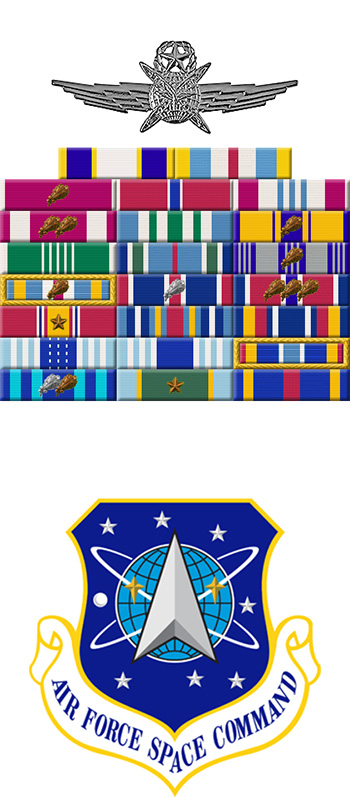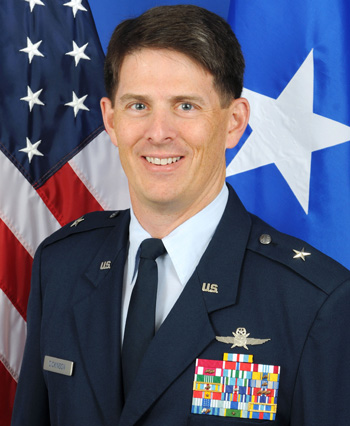
|
Ian R. Dickinson |
 |
|||
| Rank, Service | ||||
Brigadier General O-7, U.S. Air Force |
||||
| Veteran of: | ||||
|
||||
| Tribute: | ||||
Ian Dickinson was born in 1963 in Lafayette, Indiana, and moved many times growing up, finally graduating high school in Las Vegas, Nevada. He entered the U.S. Air Force Academy in June 1981, and graduated with a commission as a 2d Lt on May 29, 1985. Lt Dickinson then attended the John F. Kennedy School of Government at Harvard University in Cambridge, Massachusetts, where he received his Master's degree in Public Policy in June 1987. His first assignment was as an acquisition analyst, technical team leader, and project director with the Air Force Computer Acquisition Center at Hanscom AFB, Massachusetts, from June 1987 to January 1992, followed by service as a requirements officer with Headquarters Tactical Air Command at Langley AFB, Virginia, from January 1992 to August 1993. Capt Dickinson next served as Deputy Commander and then Commander of the Mission Systems Flight with the 1st Communications Squadron at Langley AFB from August 1993 to August 1995, and then attended Air Command and Staff College at Maxwell AFB, Alabama, from August 1995 to June 1996. He served as Commander of the 27th Communications Squadron at Cannon AFB, New Mexico, from June 1996 to July 1998, followed by service on the staff of the Joint Staff in the Pentagon from July 1998 to August 2001. Col Dickinson next served as Commander of the 422nd Air Base Squadron at RAF Croughton, England, from August 2001 to July 2003, and then as Commander of the 690th Information Operations Group at Lackland AFB, Texas, from July 2003 to June 2005. During this time, he deployed as Director of C4 Systems with Joint Task Force Horn of Africa from September 2004 to February 2005. His next assignment was as a Secretary of Defense Corporate Fellow with Sun Microsystems in Menlo Park, California, from June 2005 to June 2006, followed by service as Deputy Director of the Operational Support Modernization Program in the Office of Warfighting Integration and Chief Information Officer at the Pentagon from July 2006 to April 2007. He served as Director of C4 Systems with U.S. Air Force Central, Air Forces Staff in the Combined Air Operations Center, Southwest Asia, from April 2007 to May 2008, and then as Deputy Chief Information Officer on the Joint Staff in the Pentagon from May 2008 to May 2009. His next assignment was as Commander of the 81st Training Wing at Keesler AFB, Mississippi, from May 2009 to July 2010, followed by service as Director of Communications and Information and Chief Information Officer with Headquarters Air Force Space Command at Peterson AFB, Colorado, from August 2010 until his retirement from the Air Force on August 1, 2012. |
||||
|
||||

